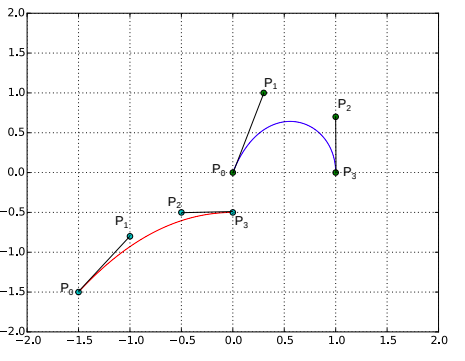I have a cubic bezier curve where the first and last points are given (namely P0(0,0) and P3(1,1)).
The other two points are defined like this: cubic-bezier(0.25, 0.1, 0.25, 1.0) (X1, Y1, X2, Y2, also those values must not be smaller or larger than 0 or 1, respectively)
Now what would I have to do to get the Y coordinate for a given X, assuming there's only one? (I know that under certain circumstances there can be multiple values, but let's just put them aside. I'm not doing rocket science over here, I just want to be able to get Y multiple times per second to do transitions)
I managed to dig up this: y coordinate for a given x cubic bezier, but I don't understand what xTarget stands for.
Oh, also this is no homework whatsoever, I'm just a bit annoyed at the fact that there's no comprehensible stuff about cubic bezier curves on the internet.


tso the resultingx,ymatches desired state. In the example is computed distance to curve however you can easily checkxinstead. – Mchugh